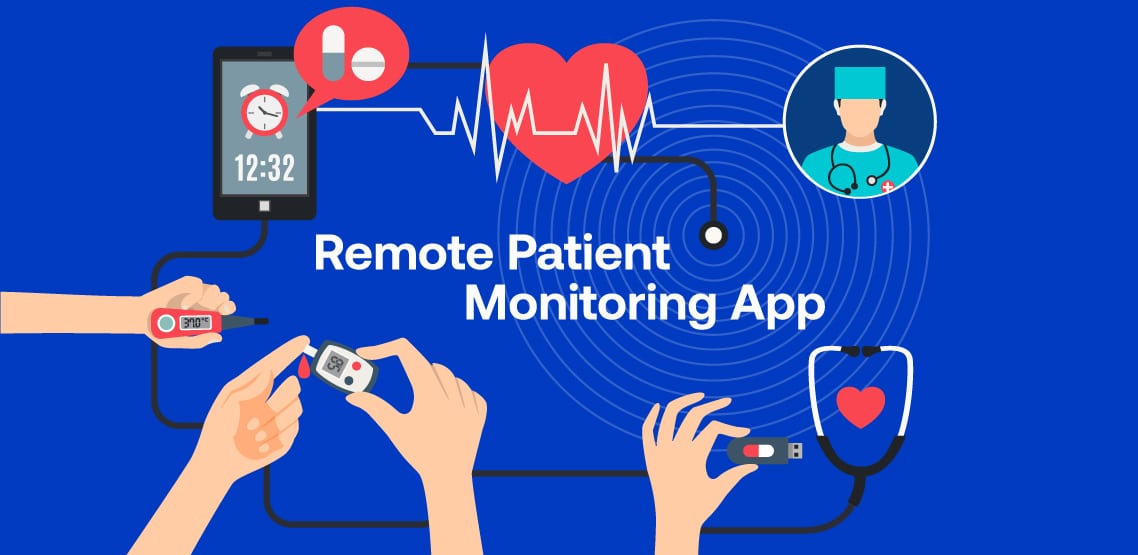What is IoT in Healthcare?
The applications of IoT in healthcare are vast and can potentially revolutionize the Healthcare Industry. We can use IoT to monitor patients remotely, streamline clinical decision-making, and provide personalized medicine. Additionally, we can use IoT to improve hospital operations and reduce healthcare costs.
Remote patient monitoring
Remote patient monitoring is a way of collecting medical data from patients in their homes and transmitting it securely to their care providers. This can be done through in-home devices that measure things like blood pressure, weight, and blood sugar levels, or through wearable devices that track heart rate and activity levels. The data is then transmitted to the patient’s care provider through a secure, HIPAA-compliant platform.
There are many benefits of remote patient monitoring, including improved patient compliance with treatment plans, better clinical outcomes, and reduced hospital readmissions. Additionally, remote patient monitoring can help to reduce healthcare costs by reducing the need for office visits and hospitalizations.
Wearable devices
The healthcare industry uses wearable devices to track various health metrics such as heart rate, steps taken, and burned calories. We can use these devices to monitor patients’ health and provide them feedback and encouragement to live healthier lifestyles. Additionally, we can use wearable devices to collect data and use them to improve population health.
Connected medical devices
Connected medical devices are those that are able to connect to and communicate with other devices or systems. This can include devices that link to and share data with electronic health records (EHRs), as well as those that communicate with other devices in order to provide patients with real-time information or alerts.
Examples of connected medical devices include smartwatches, fitness trackers, and other wearable devices that can monitor heart rate, steps taken, and other health metrics; implanted devices such as pacemakers and defibrillators; and devices that are used to monitor and treat chronic conditions such as diabetes.
Big data in healthcare: A new era in healthcare quality and safety
Big data in healthcare holds the promise of a new era in healthcare quality and safety. By analyzing large data sets, researchers and clinicians can identify patterns and relationships that may be important for improving patient care. We can also use Big Data to monitor patient safety and quality of care.
Predictive analysis in Healthcare
Predictive analytics in healthcare is becoming increasingly popular as a way to improve patient outcomes and reduce costs. By analyzing past patient data, predictive analytics can provide insights into future patient behavior and trends. We can use this information to improve care coordination, prevent readmissions, and identify at-risk patients.
The use of predictive analysis is also increasing over time. Doctors are using predictive analytics to identify which patients are at risk for certain diseases and conditions. To predict how well a patient will respond to a particular treatment, and even forecast how likely a patient is to develop a particular disease.












0 Comments